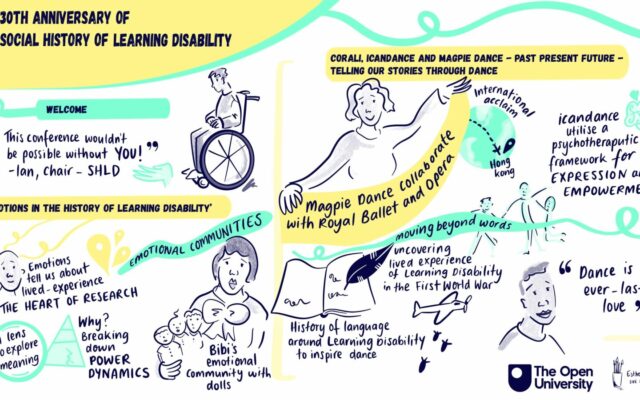Aged eight, Sasha Bergstrom-Katz was transfixed when her mother, a trainee psychologist, brought home some IQ testing materials.
What was it about these materials – test sheets, play figures, strange diagrams – that fascinated her? She has been grappling with that question ever since, and recently displayed her installation at London’s Peltz Gallery.
Intelligence quotient (IQ) testing was developed in the early 20th century by French psychologist Alfred Binet. It has had a pernicious effect on people with learning disabilities, cementing them into the bottom of the social hierarchy.
It has also created a boundary, with seemingly scientific authority expressed as a number, between those who belong and those deemed outsiders. Score 69 and you are out. Score the magical 70 and you are (just) good enough to be in.
IQ testing has spawned deep social assumptions. Those with high scores are seen as worthy of society’s highest echelons and reaping its rewards on merit (despite having been born with their attributes).
Psychometric testing has spread like a rash through our professions and businesses, determining and deciding who is fit to do what, and who isn’t fit to do anything at all.
Parents buy toys suitable for certain developmental stages, and pray their child knows how to use them. We do cognitive tests at home (Wordle, anyone?), arming ourselves against cognitive decline.
Bergstrom-Katz captures this strange influence of IQ over our lives in her installation. It consists of a two-sided desk with numerous differently sized drawers. On one surface sits an intimidating looking briefcase holding testing materials.
In each drawer lie written tests, play figures, picture cards, strange little boxes and containers. The panel between the two desks represents the intimidating authority of the tester over the tested.
Katz bought all the materials on eBay, where there is a thriving market for them.
I looked at a test question from the Weschler intelligence test for children from 1974, with a drawing of a hand with the thumb shaded in. “What is the name of this finger?”
I felt a rising sense of panic. I don’t think a thumb is a finger. Is this a trick question? Is the correct answer: “It’s not a finger, it’s a thumb”? Or is that me being… er, stupid?
Bergstrom-Katz says many people experience similar feelings, with uncomfortable memories of childhood (and adult) tests rising from forgotten corners of the mind.
Now exploring testing though her art in a PhD at Birkbeck, University of London, she has never lost her fascination.
Hidden depths or limiting labels?
A part of her loves the aesthetics of the materials and the promise they held for her as a child that they might tell her something about herself she didn’t know, perhaps even that she “might be very brilliant and likeable”. These were games, but they were serious.
Another part of her pushes back against testing: don’t tell me who I am, don’t package and categorise me, don’t define me through your questions and my answers.
This striking installation captures the dark side of testing and our ambivalent attitudes towards it. As she notes, you only ever read personal accounts of testing by people who have excelled at tests.
When we met, she was about to entertain a group of people with learning disabilities who were coming to explore and reflect on the exhibition and their experiences of testing. A good start in redressing the balance and wriggling free from the IQ straitjacket





